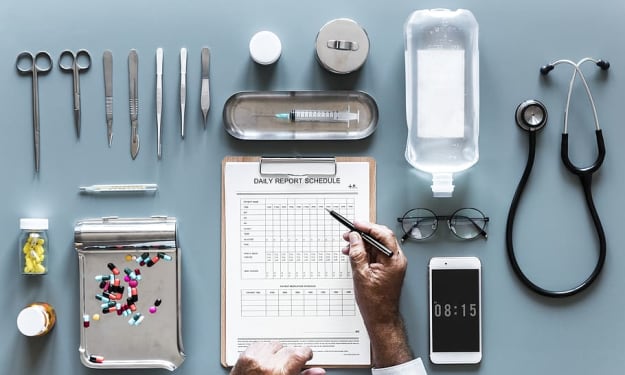How AI can prevent Illicit drugs development
Artificial intelligence can help with Illicit drugs

In recent years, undercover chemists have increasingly made minor chemical changes to known recreational drugs to circumvent the law and create new designer drugs. For example, such dispensaries may offer XLR-11 instead of cannabis or 3-MeO-PCE instead of PCP. At the best addiction treatment center in pakistan
The new designer drugs also called research chemicals or legal highs, still have physiological and psychological effects, though experts say they can come with several risks. Synthetic opioids such as fentanyl are increasingly cited among opioid-related deaths in the U.S., which have topped 75,000 this year. According to the research done on this topic, it can cause heart attacks, liver failure, brain damage, and several other diseases that would harm the body and the drug's direct effects on the brain and psychology is a second thing. the best addiction treatment center in pakistan
While the chemists producing illegal drugs work on new formulas, governments around the world are trying to regulate and ban drugs as they emerge. Many countries are using similarities in the chemical structure of drugs - for example, between fentanyl and its analogs - to ban new psychoactive substances (NPS). However, this approach varies from country to country. For example, the Australian state of Victoria banned all psychoactive substances in 2017, with some exceptions, including alcohol, tobacco, and medical cannabis. Other governments have sought to monitor production in a global network of clandestine laboratories.
According to David Wishart, a computer scientist and biologist at the University of Alberta, the current situation is more of a "backward approach". the best addiction treatment center in pakistan
Wishart and his colleagues have used a type of artificial intelligence called deep learning to develop an algorithm that identifies potential designer drugs that may not yet exist. Wishart said the millions of chemicals identified by the algorithm, called DarkNPS, could help governments stay one step ahead of their production. In November, he and a team of other scientists published the results in the journal Nature Machine Intelligence.
Wishart said the algorithm could help police officers and forensic chemists identify new psychoactive substances, which could otherwise take up to several months. DarkNPS could also isolate new useful compounds for clinical use. Another advantage, Wishart says, is that governments can test and ban hypothetical drugs developed by DarkNPS before they are produced or distributed. the best addiction treatment center in pakistan
According to the press release, the algorithm is already in use by several agencies, including the U.S. Drug Enforcement Agency, the United Nations Office on Drugs and Crime, the European Monitoring Centre for Drugs and Drug Addiction, and the German Federal Criminal Intelligence Agency. (When asked by Undark magazine, Greg Planchiello, a database management development officer at the EMCDDA, said the agency does not use the approach, and the other organizations did not respond to requests for comment.
Critics, however, argue that actively criminalizing drugs will do nothing to address the root causes of overdose deaths. Moreover, criminalization has a history of social harm: the U.S. government's war on drugs, for example, is rooted in racism and still primarily targets marginalized groups.
And while the algorithm may be able to detect drugs that are relatively similar to its predecessors, it may have trouble predicting drugs with radically different chemical structures, says Alex Krotulsky, deputy director of the Center for Forensic Research and Education and head of the organization's NPS detection program. "In practice," he says, "no one ever knows what's going to follow." the best addiction treatment center in pakistan
Currently, the standard approach to identifying an unknown drug is mass spectrometry, a method in which a compound's components are briefly weighed to determine its molecular structure. However, this method requires a reference value against which to compare the results - a reference value that may not be sufficient if the substance is completely new but maybe on the DarkNPS list.
DarkNPS produces a list of 8.9 million compounds that can be created by modifying existing drugs. Wishart and his colleagues used a neural network, a type of machine learning that resembles the human brain and is often used to analyze human languages, to generate this huge number.
The work began in 2020 when the DarkNPS team was approached by researchers at the University of Copenhagen's Department of Forensic Chemistry. The Copenhagen-based team maintains a database of known designer drugs called HighResNPS, which is a resource that can be used by healthcare, law enforcement, and forensic chemists to test for NPS by providing standards for mass spectrometry tests.
Critics argue that actively criminalizing drugs will do nothing to address the root causes of overdose deaths.
the best addiction treatment center in pakistan
The darkness team trained their algorithm using HighResNPS. When work began in February 2021, the database contained more than 1,700 records of existing drugs from around the world. Although it was a relatively small dataset, the team managed to trick the algorithm into thinking it was looking at something larger. The algorithm then combined the HighResNPS data with predictable chemical rules to generate a list of possible new combinations.





Comments
There are no comments for this story
Be the first to respond and start the conversation.